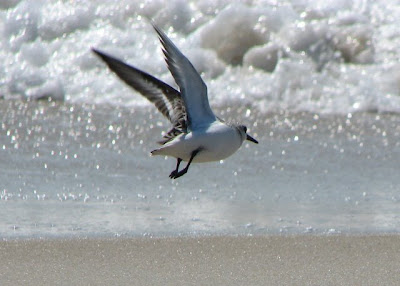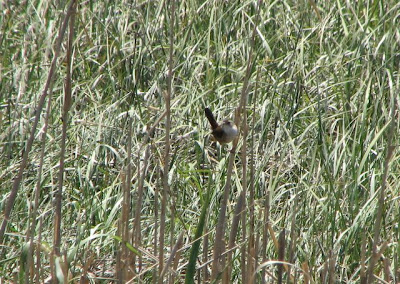Once again lemons, but an opportunity for lemonade: this will likely be the only trip I'd make to the south and/or central U.S. before December, and here was a chance to look for some species I wasn't likely to find easily in the northeast, like Dickcissels, Scissor-tailed Flycatchers, Prothonotary Warblers, and the like. I missed a few I was hoping for, but got the Scissor-taileds.
 Scissor-tailed Flycatchers (male pictured here) are usually
Scissor-tailed Flycatchers (male pictured here) are usuallypresent near my in-laws house during the summer months.
This pair are near the eastern edge of of their breeding
range, come winter they'll be loafing in Central America.
This was family, not birding, time. No leisurely trips to Bald Knob National Wildlife Refuge, the Big Woods, the Ozarks or Ouachitas, just some sporadic around the neighborhood walks. Luckily it's a nice neighborhood. A pair of Great-crested Flycatchers seem to agree, taking up residence in a cavity in a Sweetgum tree.
 More often heard than seen (man, do you hear them when they call!),
More often heard than seen (man, do you hear them when they call!),this Great-crested Flycatcher wasn't very camera shy.
I didn't witness any deliveries of nesting material or food, so assuming there is a nest built they must be in the egg-laying or incubating stage.
The neighborhood is a pretty rural affair, which you could deduce from a trip list, which includes nesting Eastern Meadowlark, Barred Owl, Acadian Flycatcher, Indigo Bunting, Red-shouldered Hawk, Eastern Bluebird, Yellow-billed Cuckoo, and Eastern Kingbird. Very few, if any, cars drive by. Several lots have livestock - cows, horses, goats, Shetland ponies. As if the ticks and chiggers weren't enough to keep my Teva-covered feet off the private property, the barbed wire fences quell any temptations.
 A pair of Mourning Doves finds the barbed wire a useful perch. I suspect
A pair of Mourning Doves finds the barbed wire a useful perch. I suspectthis couple may be the most gentle of all the neighborhood residents.
My in-laws have at least six hummingbird feeders hanging behind the house. After a fruitless effort of trying to shoot them in natural settings I gave up and parked myself next to a feeder. For a brief period just before dinner the feeder was in the sun but the house was still shaded, giving that lit-up bird against a black background effect. It's almost like I planned it. In fact, I did . . . yeah, that's the ticket!
My father in-law noted there are fewer hummingbirds coming this spring than in the past, a trend noted on various email lists. Several folks point out there are plenty of natural sources of nectar right now, once they disappear hummingbird numbers at feeders will increase again. In the week I was there I noticed an increase from six birds visiting the feeders during the first couple of days to more than double that number during the last couple of days.
Neighbor-wise, I wouldn't want to live near a hummingbird. The near-constant motion, the noisy "chit-chit-chit ing" and whirring wings, the bossy males: two of them patrolled the line of feeders, chasing away almost all hummers who ventured close. The Downy Woodpecker and the House Finch, who also frequent the nectar feeders, were left alone.
Of course, there is more to see than birds and livestock. I didn't get pictures, but there are feral dogs (well, maybe not truly feral, I think they're loosely associated with someone's home), butterflies, dragon- and damselflies, other insects, and lizards, one of which was very accommodating.
 The uniform gray-brown body and large, orange head of this Broadhead Skink identify this individual as an adult male.
The uniform gray-brown body and large, orange head of this Broadhead Skink identify this individual as an adult male.Hmmmm, anyone catch that trend? Three Saturday Night Live-based quotes, two in this post and one in a comment over on 10,000 Birds, over the past couple of days. I promise only to use funny ones, nothing from the unfunny seasons.
Now, a request: please help me out! What is this bird? I can't remember what I identified this bird as in the field, and it's stumping me right now. Let me know what you think!






























